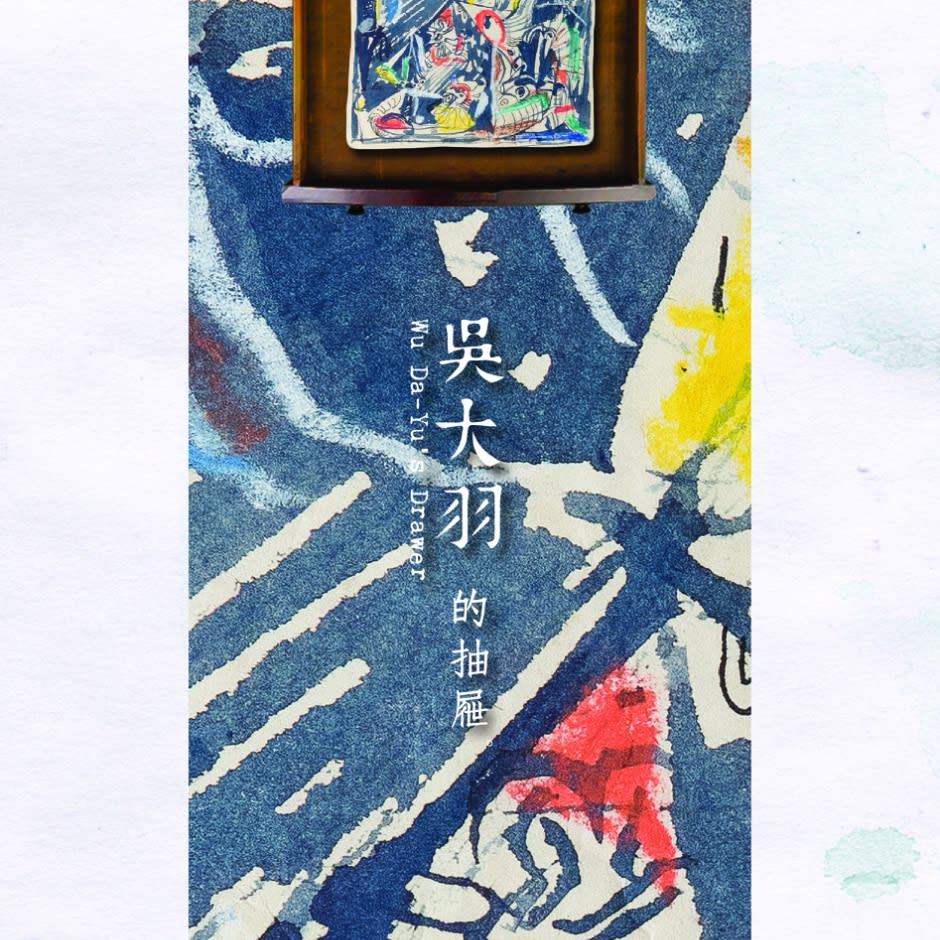The forefather of Chinese abstract art, Wu Dayu (1903-1988)was the head of the western painting department atthe Hangzhou Academy of Fine Arts (the China Academy of Art today) in 1928, where he nurtured famed artists such as Zao Wou-ki, Chu Teh-chun, and Wu Guanzhong.
But when Mao Zedong launched the Cultural Revolution, the country was swept up in a political storm that caught Wu Dayu off guard.
Shanghai, 1966. It was a tumultuous time as the Cultural Revolution broke out and spread nationwide. After fifteen years of unemployment for being unfit for the times because of "his penchant for formalist art, "Wu Dayu (1903-1988) had just started to get his life back. But abstract art was regarded as rightist, and Wu fell under the Five Black Categories[1]because his father-in-law worked as a senior bank executive under Chiang Kai-shek's regime. Wu's books, as well as over 500 works on paper were confiscated, and unjustly denounced. He was forced to accommodate two blue-collar families in his house, leaving a space of merely 20 square meters for his own family of four, while sharing a kitchen and bathroom with his neighbors. The atmosphere of terror lingered long after the Cultural Revolution ended in 1976, haunting every common household.
Life gnawed at Wu's physical being, but not at his spirit. He turned the tiny attic of his house into a studio, painting relentlessly on pieces of paper that shrunk gradually in scale, capturing fleeting moments that otherwise would have faded into oblivion, quietly hidden in his drawer. This drawer embodies the very first wave of Chinese abstract art[2], a safe haven for Wu's art and spirituality, for a creative freedom that was yet to be appreciated.
The Drawer of Wu Dayu centers on Wu's oeuvre in watercolor, oil pastel, and mixed media, with a hundred works carefully selected from nearly 700 pieces of non-sketch or studies. Regardless of scale, Wu's work manifests a fusion of shixiang[3](Dynamic Expressionism), light and color, tone and hue, testing viewers’ imagination and perception of color, form, and sound. Compared with oil works, works on paper relatively require less time and cost, which might have allowed the artist to continue his art practice amidst political turmoil, and as a result, for the following generations to see the myriad attempts by the man who had honed his skills in Paris: interweaving influences of Impressionism, Cubism, and Fauvism, palpable through an experimental and intuitive play of colors, lines, and compositions, accentuated by an Eastern aesthetic that belongs singularly to Wu Dayu. Each brushstroke, each dab of color is driven by his determination to refute and surpass himself, and the resulting works remain artistic surprises until today.
The small works of Wu Dayu diverge drastically from what is commonly viewed as sketches or studies. He was not satisfied by a mere objective representation or documentation, but longed to portray the reality seen in his mind’s eye, treading that fine line between the rational and the emotional, while exploring the possibilities in objects’ ability to transform into mental images orillusions. His work is a looking glass through which viewers see him: obstinate in his aesthetic taste, ardent in his pursuit of art, emancipation, and innocence.
Supported by his family, who remained adamant in their belief in him and his art, Wu Dayu kept on painting, despite political persecution and his fall in disgrace, as he swallowed his pride and led a life in the shadows committed to art, locking his work away in a small drawer in that tiny attic. Quietly Wu and his family waited for the day the truth shone through, when Art was redeemed, the luster of their character restored, harsh adversities for half a century dissipated like a fleeting dream at the break of dawn.
Wu Dayu
Born in Yixing County, Jiangsu Province in 1903, Wu studied oil painting under Professor Rouge at the Paris Academy of Fine Arts in 1922, and studied sculpture under sculptor Bourdelle in 1923. Upon the completion of his studies, he returned to China and began teaching atthe Shanghai Xinhua School of Fine Arts, and thenat the Hangzhou Academy of Fine Arts. Together with Lin Fengmian and Lin Wenzhang, he established the Art Movement Society, a national organization that fostered the publication of art journals.
In 1946, Wu Dayu’s works were displayed in the Chongqing National History Museum alongside the works ofLin Fengmian, Guan Liang, Ding Yanyong, and Li Zhongsheng, in an overwhelmingly successful exhibition organized by ZaoWou-Ki. In 1960, Wu taught at the oil painting department at the Shanghai Academy of Fine Arts, before he entered the Shanghai Oil Painting and Sculpture Institute as a painter in 1965, while serving as the assistant principal of the Shanghai Chinese Painting Academy, and the consultant for the Shanghai Artists Association and the art department of the Shanghai Jiao Tong University. In 1982, Wu participated in the Shanghai Oil Painting Exhibitionat Hua Fang Zhai in the Beihai Park, Beijing, which was the first exhibition after the Cultural Revolution for the first generation of oil painters.
Wu Dayu passed away in Shanghai in 1988. Since his death, his work has been the subject of closer examination and many retrospective exhibitions and seminars, including at the Shanghai Art Museum (1995), the National Museum of History in Taipei (2001), and the Symposium on the Art of Wu Dayu at the Crowne Plaza Beijing (1996). Famed author Li Puyuan traced the trajectory of Wu's work and highlighted the influences of French Impressionism in his painting, where the artist amplified light and color to create a dramatic and vibrant effect.

